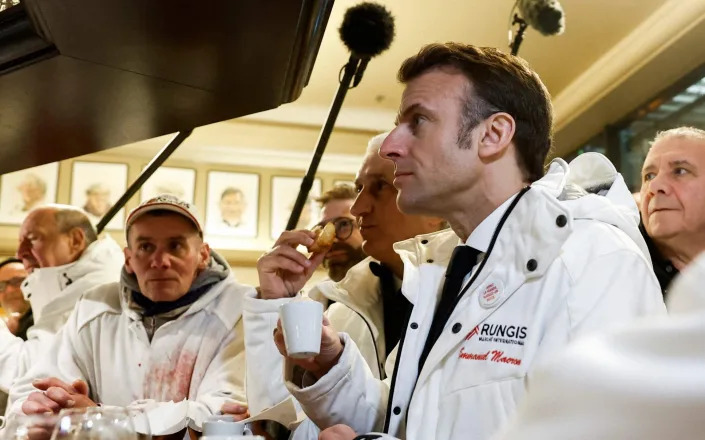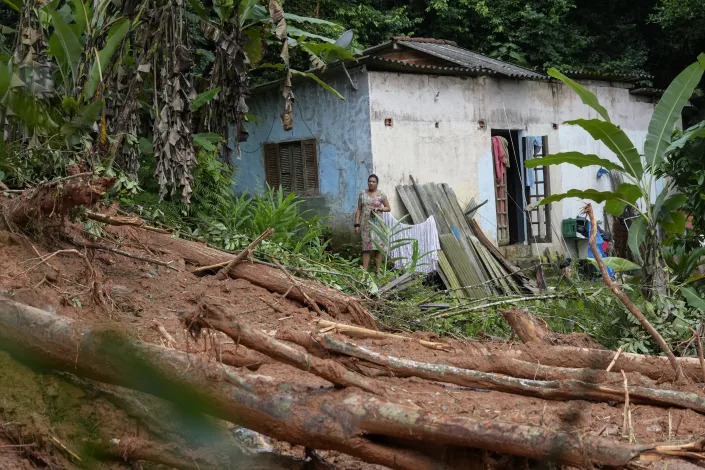Story by Tyler Dawson • Yesterday
EDMONTON — The federal government says in its newly released “just transition” plan that the shift to a green economy will create so many jobs there won’t be enough workers to fill them, but this isn’t likely to placate critics in Alberta, the province likely to be hit hardest by any decline in the oil and gas sector.

Canada is actively exploring new nuclear energy technologies, including small modular reactors (SMRs). SUPPLIED© Provided by National Post
The plan, released Friday while the political world was paying attention to the report on the Liberals’ use of the Emergencies Act to quash the Freedom Convoy protests last year, is to guide the first two years of the transition — further plans will be released every five years after 2025.
While lacking many specifics, it outlines in broad terms the ways the federal government will help maintain and create energy jobs, as well as transfer workers to net-zero jobs as needed.
“Well, I can tell you, Vladimir Putin is smiling today,” said Conservative Leader Pierre Poilievre on Friday.
Poilievre said the government of Prime Minister Justin Trudeau is driving away energy jobs and leading Canada to foreign dependence on oil and gas from dictatorships.
“The answer is to develop our resources here in Canada while incentivizing our companies to do so with the lowest possible emissions,” said Poilievre, who was speaking at a news conference on the Emergencies Act report.
Alberta Premier Danielle Smith pointed to the lack of information about the role of liquid natural gas as an emissions-reducing product (compared to coal and other, higher-emitting fuels).
“Implementing a federal plan of this magnitude in areas of exclusive provincial jurisdiction doesn’t merely require piecemeal ‘discussions’ with the provinces, it requires outright provincial approval and cooperation,” Smith said in a statement. “Alberta has not been involved in any such approvals, nor included in the development of the plan published today.”
The 32-page “Sustainable Jobs Plan” says if Canada plays its cards right, the clean energy economy will create so many jobs there may not be enough workers to fill them. But some of it will require the traditional oil and gas sectors to “aggressively” lower the greenhouse gas emissions produced as the fuels are extracted.
Charlie Angus, the NDP’s natural resources critic, welcomed the plan and committed to pushing for well-paying, union work.
“The question is whether or not the government will back up these positive words with the massive investments required to kick-start a clean energy future,” Angus said.
At this point, the plan is a plan for more plans, better data collection and further engagement across various groups and regions in Canada. It establishes frameworks and councils to continue the discussions; it’s light on figures and timelines, includes no new funding and doesn’t put a specific figure on just how many jobs might be created.
Hadrian Mertins-Kirkwood, an analyst with the Canadian Centre for Policy Alternatives, noted that many of the initiatives mentioned in the plan are already underway.
“There’s very little here that’s completely new, but it is the first time that kind of pulled all the pieces together into one place,” Mertins-Kirkwood said.
Earlier this year, Natural Resources Minister Jonathan Wilkinson said the Liberals would introduce legislation to guide the “just transition.”
The term itself refers to the idea that governments guide workers displaced by environmental policies towards new jobs. It has, however, taken on a somewhat different meaning in Alberta, where politicians have suggested it’s a plan to shut down the oil and gas sector and impoverish Canada’s richest province.
Smith has said the plan “isn’t about a transition at all.”
“It’s about eliminating entire sectors of our economy and hundreds of thousands of good Alberta jobs deemed too ‘dirty’ by elites in Ottawa,” she said.
Alberta’s government has attempted to establish a dialogue on what a transition might look like. (Indeed, Mertins-Kirkwood noted that the plan actually plays down the energy transition.)
The plan released Friday is the first time the government has laid out in some detail what it proposes to do, including renaming the idea from the “just transition” plan — a concept that has been criticized for implying those working in oil and gas are in some way are unjust — to the “sustainable jobs plan.”
Everything we know about Canada's 'just transition' plan for oil and gas workers
“The term ‘sustainable jobs’ also reflects the concept of decent, well-paying, high-quality jobs that can support workers and their families over time and includes such elements as fair income, job security, social protection, and social dialogue,” the report says.
Perhaps notably, no salary figures are given for what constitutes “well-paying.” For many in the oil and gas sector, who can clear $200,000 a year, looking to so-called green jobs could entail a major income cut.
Citing Clean Energy Canada, a think-tank at Simon Fraser University, the report notes that jobs in the green energy sector could grow at 3.4 per cent annually over the next decade — quadruple the growth rate of other parts of the economy.
The report also notes that there will still be a demand for conventional oil and gas products by 2050, though at a greatly reduced level from today, according to International Energy Agency predictions.
While the plan contemplates training and re-training programs, it also acknowledges that the skills workers currently have in, say, a refinery, could transfer smoothly to an emerging economy. Whether the government can facilitate such a major economic shift remains to be seen, indeed, polling shows that 56 per cent of Canadians are skeptical that it can.
Where Canada has a decent record is in industrial policy; the oilsands, for example, were backed by considerable government money and research to attain commercial viability.
Yet, that doesn’t mean we’re good at other aspects of such a transition. Various programs of similar sorts have been rolled out in recent decades, from the millions of dollars spent to retrain Newfoundland fishermen in the 1990s to more recent attempts to retrain coal miners.
“Canada has a really poor record at managing economic transitions, especially natural resource transitions,” said Mertins-Kirkwood. “That’s why, I think, so many workers today are skeptical of transition language.”
The issue, he said, is that governments have waited until an economic bust before scrambling to put together training programs and economic diversification.
“To actually make a transition work, you have to be proactive,” said Mertins-Kirkwood. “Does this new plan deliver on that? It is definitely proactive on the training side, which is good. But I don’t see this plan as being proactive on the economic diversification side.”
While the issue has received substantial attention in Alberta, it has yet to register with many Canadians. Recent polling shows that 84 per cent of Canadians have never heard of the “just transition” plan.
“The biggest problem we face now is not that it can’t be done, it’s can it be done faster, given the climate imperative?” said Mertins-Kirkwood.





















